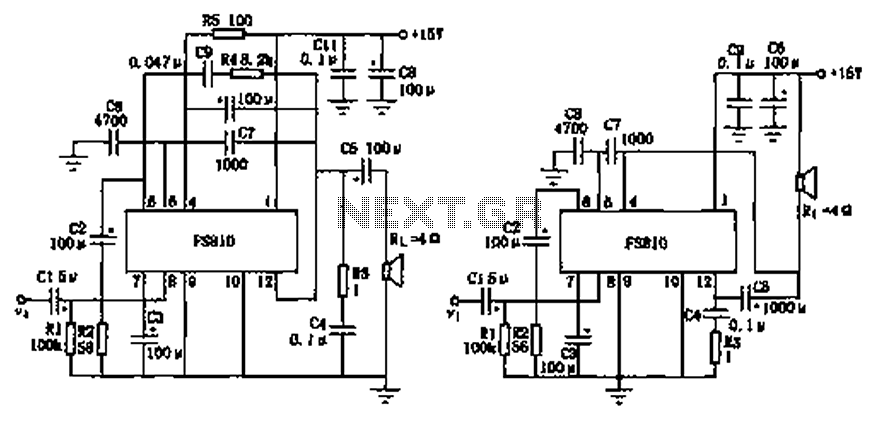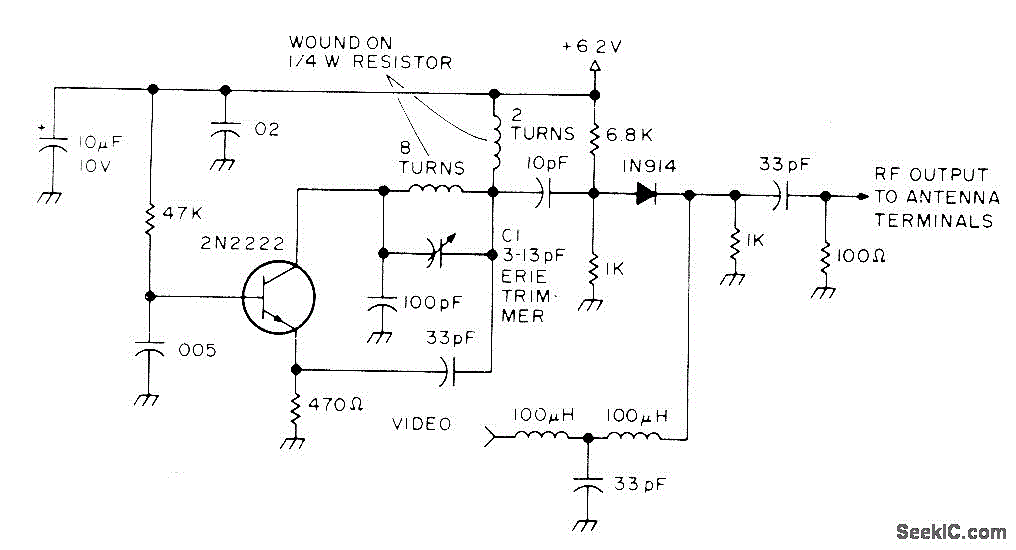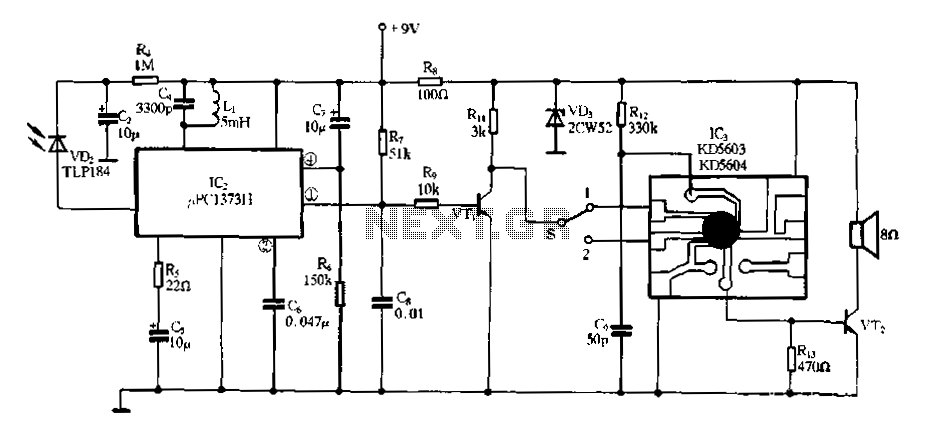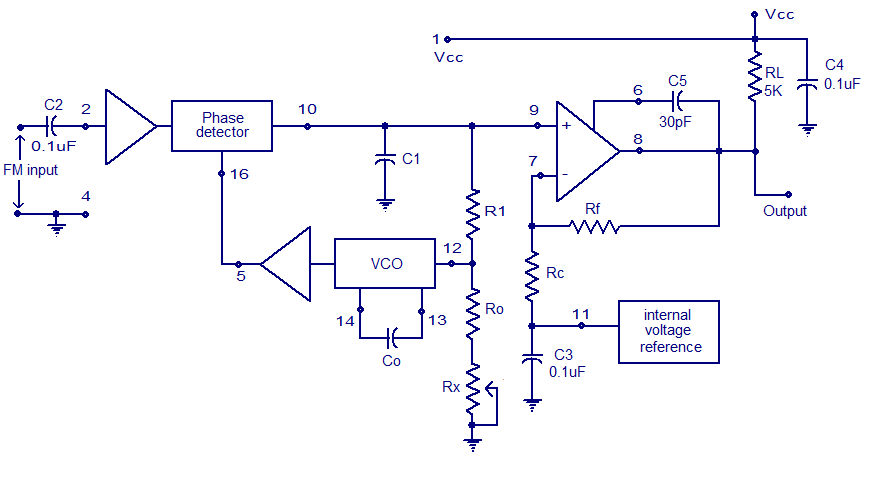
Balanced cross tube inverter circuit
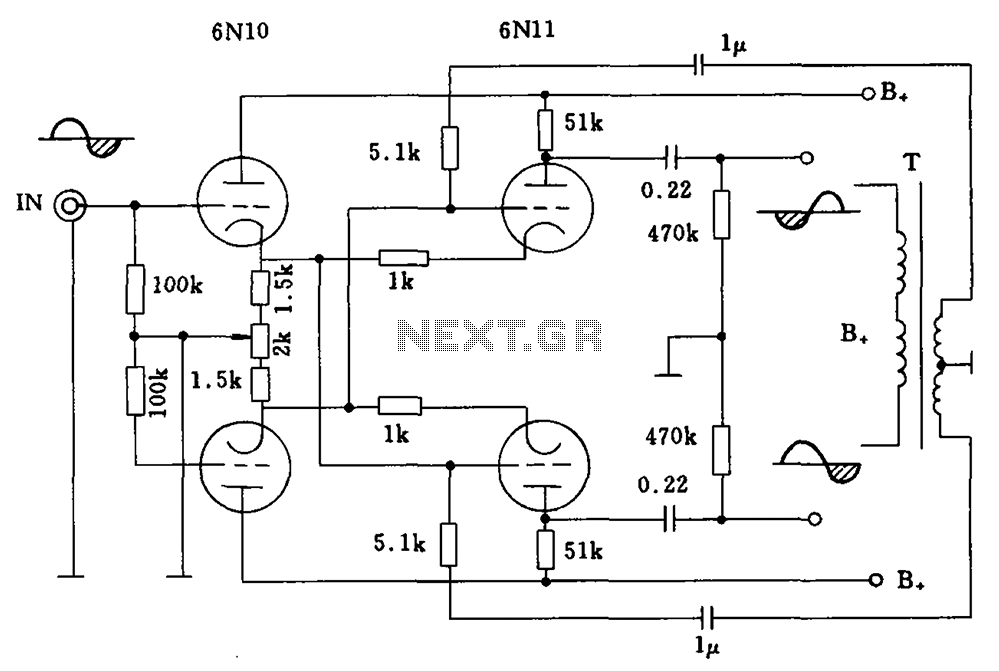
Balanced cross tube inverter circuit, also known as the Chelles inverter circuit, can be utilized as a preamplifier and employs 6N10 and 611 tubes in an inverted configuration. The circuit is designed to work with a final amplifier tube, specifically utilizing a 300B tube.
The balanced cross tube inverter circuit is an essential component in audio amplification systems, particularly in high-fidelity applications. This circuit operates by converting a single-ended signal into a balanced output, which significantly reduces noise and distortion, leading to improved audio quality.
The 6N10 and 611 tubes serve as the active elements in the inverter stage, providing the necessary gain and phase inversion. The 6N10 is a dual triode that allows for efficient signal amplification, while the 611 tube, a power triode, is often used in audio applications for its warm sound characteristics and high output power capability.
The circuit typically features a differential input stage, allowing for the rejection of common-mode noise, which is crucial in maintaining signal integrity in audio systems. The output stage, utilizing the 300B tube, is known for its linearity and low distortion, making it an excellent choice for driving speakers in high-end audio setups.
Overall, the balanced cross tube inverter circuit is a sophisticated design that combines the unique properties of vacuum tubes with modern audio engineering principles, resulting in a highly effective amplification solution for audiophiles and professional sound engineers alike. Balanced cross tube inverter circuit is also known Chelles inverter circuit, it can be used as a preamp and 6N10,611 inverted. With the final amplifier tube amplifier using 300 B mating.
The balanced cross tube inverter circuit is an essential component in audio amplification systems, particularly in high-fidelity applications. This circuit operates by converting a single-ended signal into a balanced output, which significantly reduces noise and distortion, leading to improved audio quality.
The 6N10 and 611 tubes serve as the active elements in the inverter stage, providing the necessary gain and phase inversion. The 6N10 is a dual triode that allows for efficient signal amplification, while the 611 tube, a power triode, is often used in audio applications for its warm sound characteristics and high output power capability.
The circuit typically features a differential input stage, allowing for the rejection of common-mode noise, which is crucial in maintaining signal integrity in audio systems. The output stage, utilizing the 300B tube, is known for its linearity and low distortion, making it an excellent choice for driving speakers in high-end audio setups.
Overall, the balanced cross tube inverter circuit is a sophisticated design that combines the unique properties of vacuum tubes with modern audio engineering principles, resulting in a highly effective amplification solution for audiophiles and professional sound engineers alike. Balanced cross tube inverter circuit is also known Chelles inverter circuit, it can be used as a preamp and 6N10,611 inverted. With the final amplifier tube amplifier using 300 B mating.
